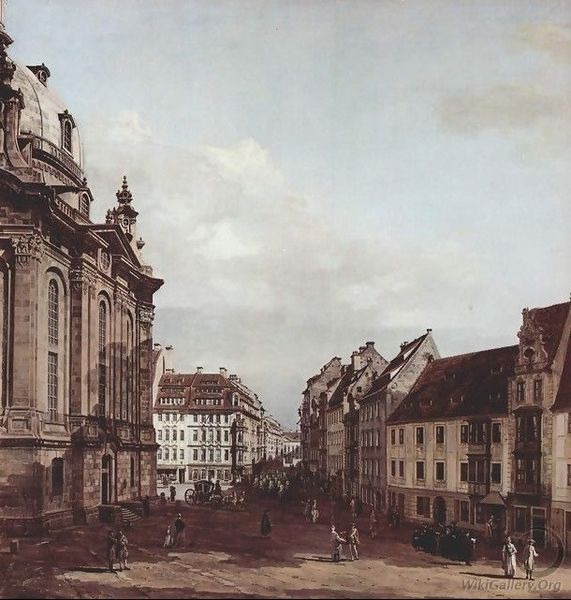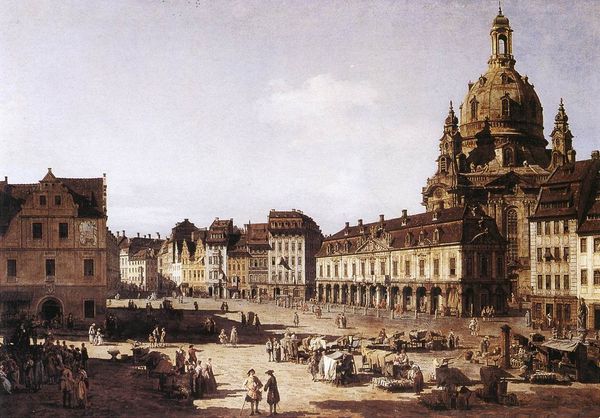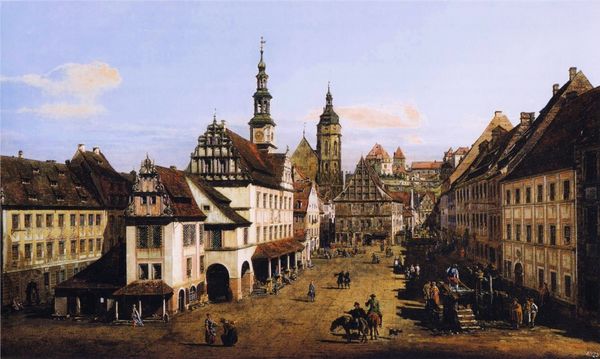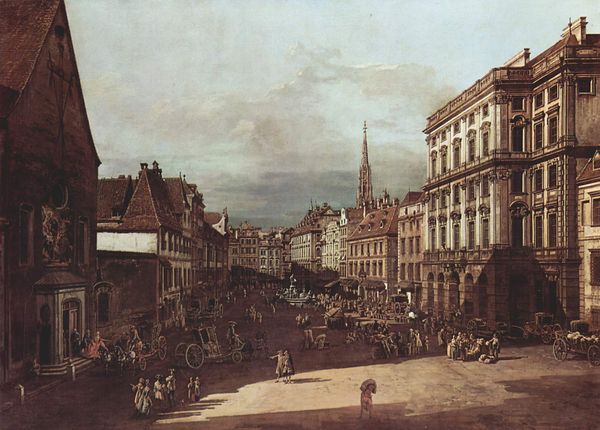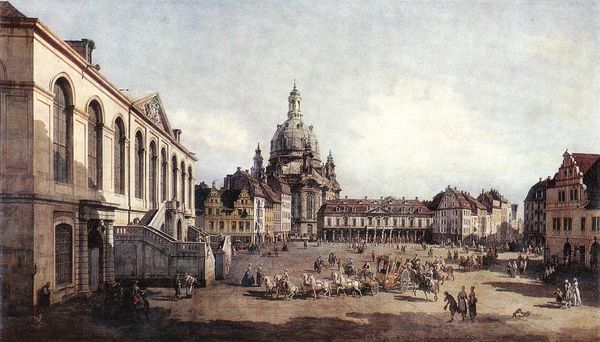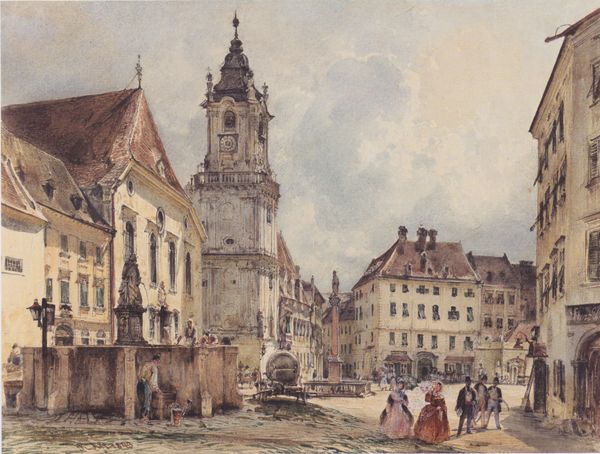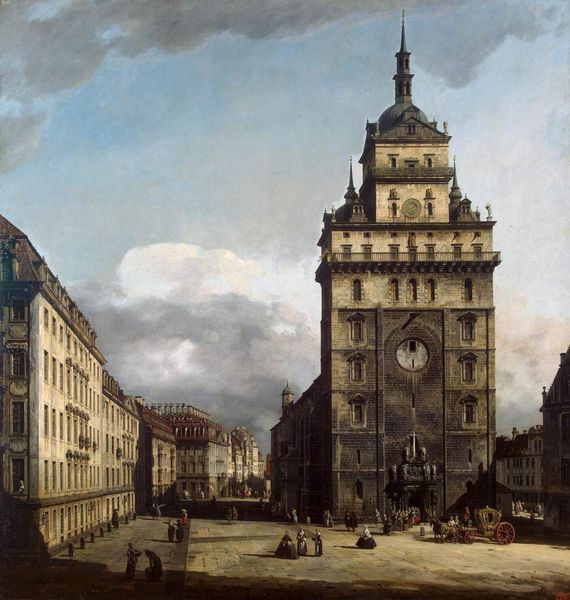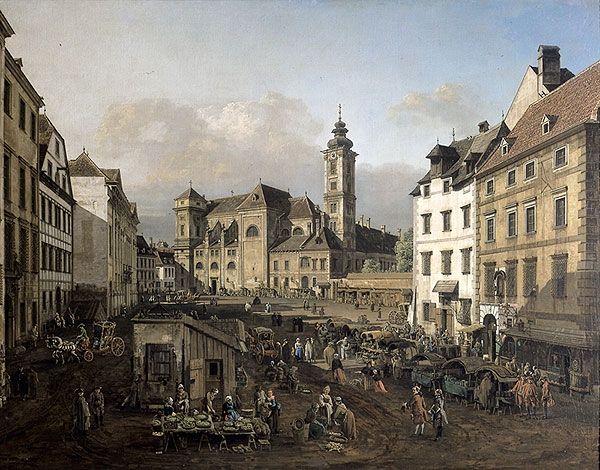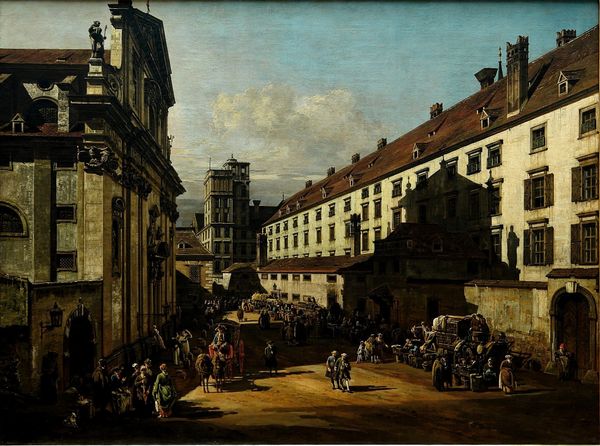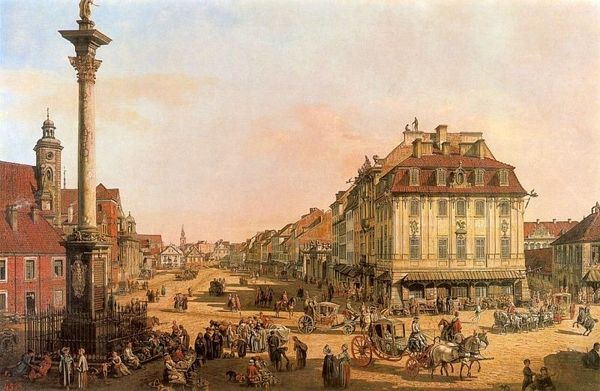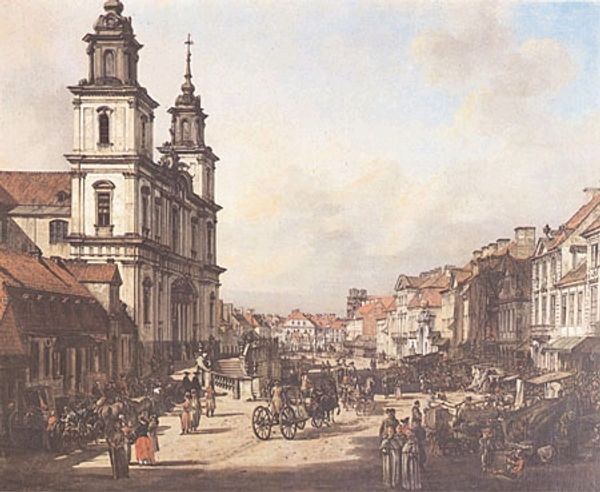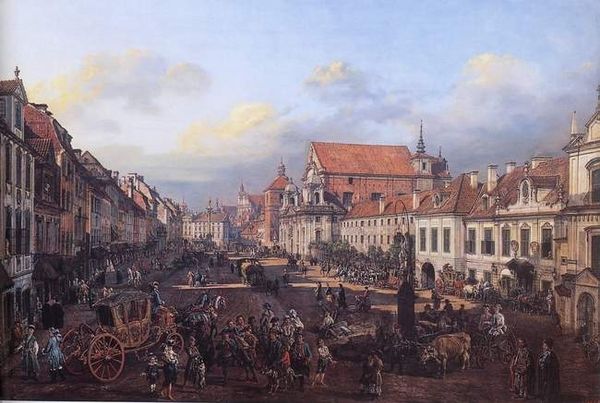
painting, oil-paint, architecture
#
sky
#
baroque
#
painting
#
oil-paint
#
landscape
#
perspective
#
cityscape
#
architecture
#
realism
Copyright: Public domain
Editor: Here we have Bernardo Bellotto’s “Dresden, the Frauenkirche and the Rampische Gasse,” painted in 1750, using oil paints. It’s incredibly detailed; you can almost feel the hustle and bustle of the city. How would you interpret this piece? Curator: Well, beyond its aesthetic appeal, it's crucial to consider the labor embedded within the materiality. Think about the pigments, the canvas—each element represents an extraction from the earth, a transformation through human effort. Where did Bellotto source his pigments, and what processes were used to prepare them? These factors impact not only the artwork's visual appearance, but also its historical and social context. Editor: That’s a great point. I hadn't considered the implications of pigment sourcing. Does that influence how you see the architectural depiction, too? Curator: Absolutely. The architectural precision showcases the booming construction industry of the time, dependent on the exploitation of resources and, let's not forget, a vast workforce. The Frauenkirche itself, still under construction, represents not just spiritual aspiration but also material ambition, achieved through complex systems of labor and financial investment. What socioeconomic forces enabled such a grand structure? Editor: So you're suggesting that the painting, on the surface a beautiful cityscape, is also a record of the city’s economic and labor structures at the time? Curator: Precisely. Even Bellotto’s choice to depict it reveals a certain social consciousness, an awareness of the forces shaping Dresden, framing it as more than just surface beauty but as a locus of resource, industry and labor. Editor: That’s fascinating. I’ll never look at cityscapes the same way again. It encourages you to investigate beyond the image. Curator: Indeed. By examining the materiality and the process of production, we can understand deeper social and historical realities embedded within the artwork.
Comments
No comments
Be the first to comment and join the conversation on the ultimate creative platform.
